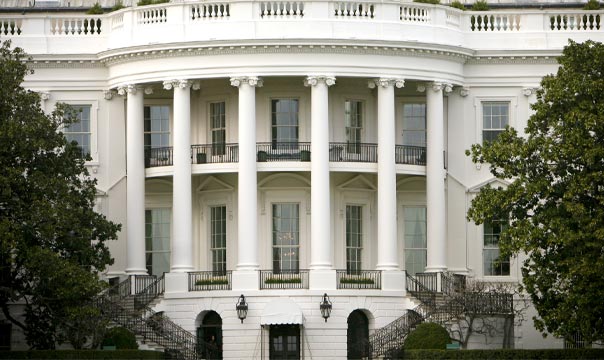
Key takeaways
New infrastructure spending is in the pipeline for major transportation and other projects.
Funding approved in 2021 legislation will be spent over several years.
The economic impact is likely to be spread out over time.
New investment in the nation’s infrastructure is now in the pipeline, much of it aimed at transportation projects. This is the result of a $1.2 trillion infrastructure plan signed into law in 2021. It’s one of several major spending packages enacted into law by Congress and the Biden administration. Other major legislation includes the $1.9 trillion American Rescue Plan, enacted in early 2021 with financial relief related to the ongoing COVID-19 pandemic, and the $485 billion Inflation Reduction Act, which passed in 2022.
What’s included in the infrastructure bill
The need for increased spending on the nation’s infrastructure has generally received bipartisan backing over the years. Proposals are frequently put forth but often fail to become law. Disagreement among legislators on specific areas of focus may have been a barrier blocking passage of such legislation in previous years. The 2021 infrastructure broke the logjam, receiving bipartisan support, particularly in the U.S. Senate.
Kevin MacMillan, head of government relations at U.S. Bank, says that a sense of urgency about passing the infrastructure bill set in among policymakers. “A number of incumbent legislators up for re-election in 2022 wanted to see money flowing from this bill to major projects in the areas they represent as soon as possible.” MacMillan points out that there’s often a time lag between the period when a spending bill becomes law and the point at which actual funds begin flowing from it. Several projects are now underway.
The infrastructure bill includes $550 billion in “new” spending above baseline amounts that were expected to already be in place under current budgets. Of that, more than half is targeted to transportation projects. This includes $110 billion for major road and bridge work. $66 billion is directed to passenger and freight rail and $39 billion to improve public transit. The rest is spread among other areas such as airports, ports and waterways, electric vehicle infrastructure and electric buses.
Another $264 billion is directed toward other types of infrastructure work. That includes power infrastructure (such as improving the electrical grid), broadband expansion, water projects and environmental remediation.
“Infrastructure spending is meant to create a foundation for future growth. This type of legislation is not aimed so much at driving baseline growth today but helping drive potential growth for years to come.”
Rob Haworth, senior investment strategy director for U.S. Bank
Infrastructure spending is a long-term investment
Although $550 billion in new spending is below some of the initial proposals put forth by the Biden administration it is still a significant number, particularly when combined when baseline infrastructure spending. MacMillan points out that the infrastructure package passed during the early years of President Barack Obama’s term was a five-year plan valued at $305 billion. The latest infrastructure plan appears impressive by comparison.
Nevertheless, infrastructure spending isn’t generally designed to provide an immediate boost to the economy, as is the case with other forms of government stimulus. “The economic impact tends to be limited because the spending doesn’t happen all at once,” says Eric Freedman, chief investment officer at U.S. Bank. The latest package signed into law targets spending most of the approximately $1 trillion package over a five-year period. “With this time period and the scaled-back scope of the infrastructure package compared to original proposals, the infrastructure bill isn’t likely to have a dramatic impact on the markets,” says Freedman.
The American Rescue Plan and other COVID-19-related relief packages that injected trillions of dollars into the U.S. economy dating back to early 2020 were meant to have an immediate economic impact. The infrastructure plan should be looked at differently, notes Rob Haworth, senior investment strategy director at U.S. Bank. “Infrastructure spending is meant to create a foundation for future growth. This type of legislation is not aimed so much at driving baseline growth today but helping drive potential growth for years to come.”
For example, making improvements to an airport that could result in higher airline traffic in the future would provide a long-lasting economic boost to the communities it serves. Road improvements might create more opportunities for the development of business districts on or near the affected roads. These examples demonstrate why infrastructure can be considered an investment by government in the long-term economic health of the nation.
An additional consideration when assessing the immediate economic impact of infrastructure legislation are the number of projects that are in the pipeline and could be initiated on short notice. “So-called ‘shovel-ready’ projects can be limited, and even to some extent not fully ready to hit the ground running even though the money is in place,” says Haworth. “You have to be able to identify projects that can be initiated.” Haworth notes that this often delays the economic impact of infrastructure spending.
In 2022, another government investment package, the Inflation Reduction Act, was signed into law. It included a number of provisions related to energy security and climate change. Among these are tax credits for households that invest in clean energy projects as well as investments on broader-scale clean energy production. These too are considered longer-term provisions that will have an impact over time.
Infrastructure spending and investment implications
It’s still too early to predict which industries are best positioned to capitalize on increased government spending on infrastructure. “Since most or all of the money in the infrastructure bill goes toward new roads, bridges and other construction projects, basic materials, industrials and transportation are sectors that should be positioned to benefit,” says Freedman.
Government legislation is typically just one factor that individuals should consider as they review their investment strategies. Certain sectors or companies may experience a short-term benefit from specific government programs.
Chances are that passage of these spending packages should not alter your long-term investment strategy in any sizable way. However, it may open to the door to specific investment opportunities. Changes to tax law may also have an impact on how you position assets. Consider talking with your wealth planning professional about how any specific opportunities and tax considerations related to pending legislation might affect your overall investment strategy.
Tags:
Related articles

Markets and the Biden administration
Explore how the markets have fared so far under the current administration and what to expect moving forward.

Understanding tax law changes
Learn what new tax law changes included in the Inflation Reduction Act and SECURE Act 2.0 may mean for you.
